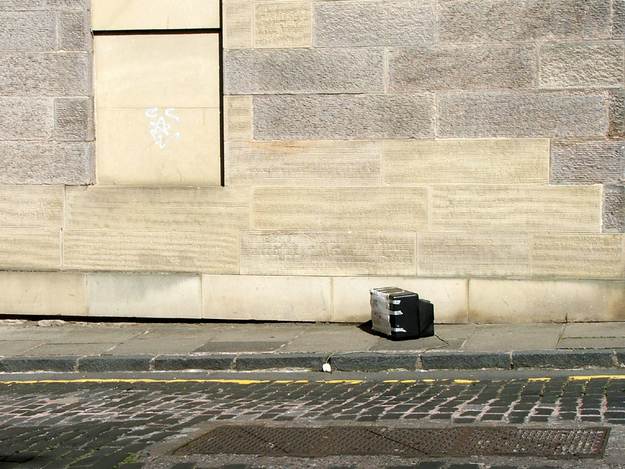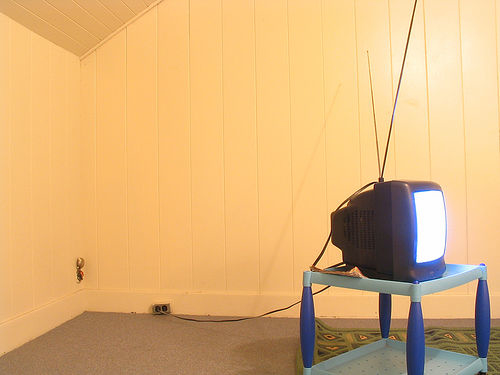What?
The course kicks-off with lecturers and analysis of any media documentary projects and current digital media practices. In the following days, the participants will develop prototypes of their own any media documentary project. They are tutored by experienced coaches, assisted by savvy technical assistants and get feedback from international guest lecturers.
In this course we will look at ways in which stories can be composed in online network environments. We look at the roles that user generated content can play in documentary projects. We investigate the possibilities of locative techniques like GPS for documentary purposes. And we will look at all possible roles of the mobile phone: from a production tool to a distribution channel to an interactive communication device and we'll also see what virtual worlds like Second Life have to offer documentary makers.
At the end of the course participants:
- have selected new media for their documentary project
- gained insight in current digital media practices, from user generated content to film on mobile phones, and from locative media to the use of game elements
- gained insight in revenue models for their project and applied it in the design of the project format
- developed a prototype, including an interactivity model
Trainers
Next to the team of outstanding trainers including digital storyteller Florian Thalhofer, media designer Jakob Schillinger and media watcher and workshop assembler Klaas Kuitenbrouwer, the following lecturers will make an appearance:
- Martijn de Waal is media researcher, lecturer and writer. He co-initiated The New Reporter, an insightful online magazine on new media journalism and meta-journalism. Martijn de Waal wil talk about geotagging and locative media as documentary practices.
- Neil Sieling, former executive producer with Alive TV, gained career experience with the Independent Television Service, the Open Society Institute, and the POV series on PBS. Today, he licenses programming for the Link TV channel he helped launch, and also does strategic planning. Neil Seiling will talk about new media revenue models, and how they apply to the documentary practice.
- Jamie King is a young, enthusiastic activist, filmmaker, writer and practical theorist in the area of new media, post-IP culture and social organisation. He will talk about alternative distribution methods for new media documentaries.
For whom?
The workshop is designed for 16 professional makers, artists, producers, editors and educators of documentary film, radio, television and video. Participants should have done the content research for their project, but are still deciding on the right media format.
The course language will be English. A report on the first any Media Documentary course at IDFA 2006 can be found here.
Tools and methods:
Next to tutorials, instructions and lectures participants will be working on a prototype. In order to build their prototypes, participants are introduced to the sly and easy-to-use Korsakow System, that can be used as a databased storytelling tool or as a presentation device. Next to this, participants will be introduced to a selection of current online tools and services that together provide the essential range of Web2.0 functionality.
The Now Media Hours and finding money for your project.
The Now Media Hours (co-produced by IDFA Forum) will be part of the workshop process. These events focuses on the ways income can be generated from crossmedia projects and which new kinds of partners can be approached for producing and financing. Together with representatives from new content providers, ‘market intelligence’ will be developed for new media documentaries. A forum of new and old producers and other specialists present successful and failed strategies and try to come with sound advice and concise conclusions.
Besides this event we will be looking a various revenue systems throughout the course. Participants will learn where production money and potential partners may come from in new media. Participants will learn to use these important factors in the design of the right project format.
Workshop Report
So what did we cover?
Martijn de Waal consisely analysed the current media developments towards hybridization: linking digital information to physical places. Technologies like GPS, WiFi, Bluetooth en RFID allow digital information to mingle freely with and enter deeply into physical reality. Martijn looked at these techno-cultural practices from their exciting potential to be included in any media documentary making. For documentary makers this requires the realization that besides camera’s and microphones also other tools may capture and represent reality creatively, and are therefore legitimate documentary tools.
Florian Thalhofer explained why databased stories (like you can make with the Korsakow System) can represent realities quite intimately (depending on the skill of the maker, of course) because they can react to the presence and preferences of a viewer (user, player) not unlike the way live storytellers adapt their stories to the way their audiences react.
Klaas Kuitenbrouwer offered three microlectures on the first workshop day. One on the reason why ecology is a good concept to describe the current interrelated media systems; a second one on how to develop crossmedial concepts, and the third lecture was about the structure and design of interactive experiences.
In the session on the 4th workshop day he lectured on the uses of games and game technology in the documentary context. How can game technology achieve 'documentary effects?' Where can the documentary authenticity exist in a game? Can documentary games also be good, playable games?
Producability?
The participants all came with a project – some with extensive research and prepared footage, some with rough material and a whole bunch of questions, some with a very specific goal and various possible strategies to reach it.
In the 5 workshop days, they were to come to terms with the possibilities of new media environments and tools as means for documentary making: they would develop a producible format for their projects.
For this they didn’t only need insights in the tools, technologies and audience interactions, but also in the new ways of distribution and finding production money. That’s why we invited Jamie King and Neil Seiling to coach in this workshop as well. They lectured and coached participants on the second and third workshop day.
Jamie King is co-maker of the film Steal this Film on the movement against intellectual property and distribution of media through peer-to-peer networks. This content of that film, but even more the way it traveled around the world demonstrated his point: ‘the distribution problem’ has been solved. Offer your project in a peer-to-peer filesharing network and distribution will be taken care of. But how to make people pay for your work, then? There was the catch: you can’t make them to. You can only hope they will pay some, if they like your work. This is less silly than it sounds: Steal this Film more than covered it’s productions costs that way. And most freeware software development actually works on this basis. But initial funding is harder to organize, this way.
Neil Seiling had a lot of extremely useful but in some cases quite sobering information on revenue models for new media documentaries. Basically the context he sketched was one of diminishing public funding for documentaries, without a lot of handy alternatives.
The hopeful news was that there exist an increasing amount of effective way to reduce production costs, especially for new media based projects. There are also a lot of interesting developments towards monetizing online video, but they are in too early stages to really be counted upon in a so-called ‘business model’.
What they made
The participants documented their own project development. You can find the documentation next to profile page of the participants.
Photo from Flickr by Only Alice
This course is made possible with the support of the MEDIA PLUS PROGRAMME of the European Community and OCW.
Photoby Ian Bart at Flickr.



